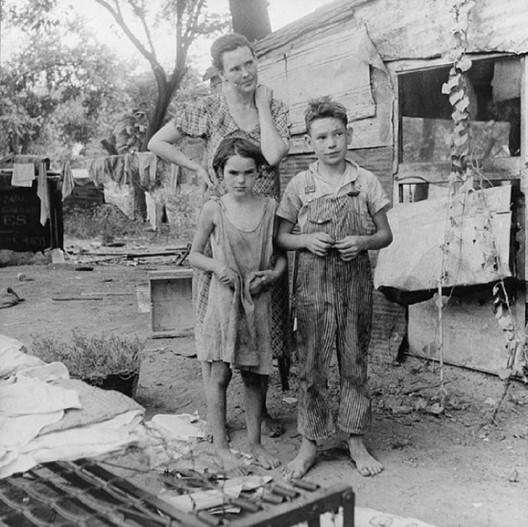Module 8: The Interwar Period
Section outline
-

The interwar years of the 1920s and 1930s saw a world recovering from the upheaval of World War I. People reacted differently to the horrors of the conflict, but many chose to embrace the present, and the 1920s were filled with new forms of cultural expression and new opportunities. In Europe the economy still lagged, but in other parts of the world economic growth soared. By the 1930s, however, economic instability had become common as the Great Depression plunged nations into poverty and unemployment. Governments dealt with the downturn in a variety of ways, but solutions in several countries included more authoritarian policies.
(credit: “Poor mother and children, Oklahoma, 1936 by Dorothea Lange” by Library of Congress/Wikimedia Commons, Public Domain)Upon completion of this module, you will be able to:
- Describe World War I’s immediate aftermath, including the provisions of the Treaty of Versailles, the breakup of the Ottoman Empire, and the effect on the economies of Europe and the United States
- Describe the Soviet Union’s early years and the structure of its
government, including analyzing Stalin's first Five-Year Plan
- Explain the causes and effects of the Great Depression and possible connections to communism and fascism
- Analyze the similarities and differences among fascist Italy, Nazi
Germany, and Stalin’s Soviet Union
- Describe the expansion of liberty and civil rights in Western Europe and the United States during the interwar period, while colonialism continued
To achieve these objectives:
- Read the Module Introduction.
- Read Chapter 8 in Western Civilization II.
- Complete the assessments and discussion questions.
Module Pressbooks Resources and Activities
You will find the following resources and activities in this module at the Pressbooks website. Click on the links below to access or complete each item.
Background Colour
Font Face
Font Kerning
Font Size
Image Visibility
Letter Spacing
Line Height
Link Highlight
Text Colour
